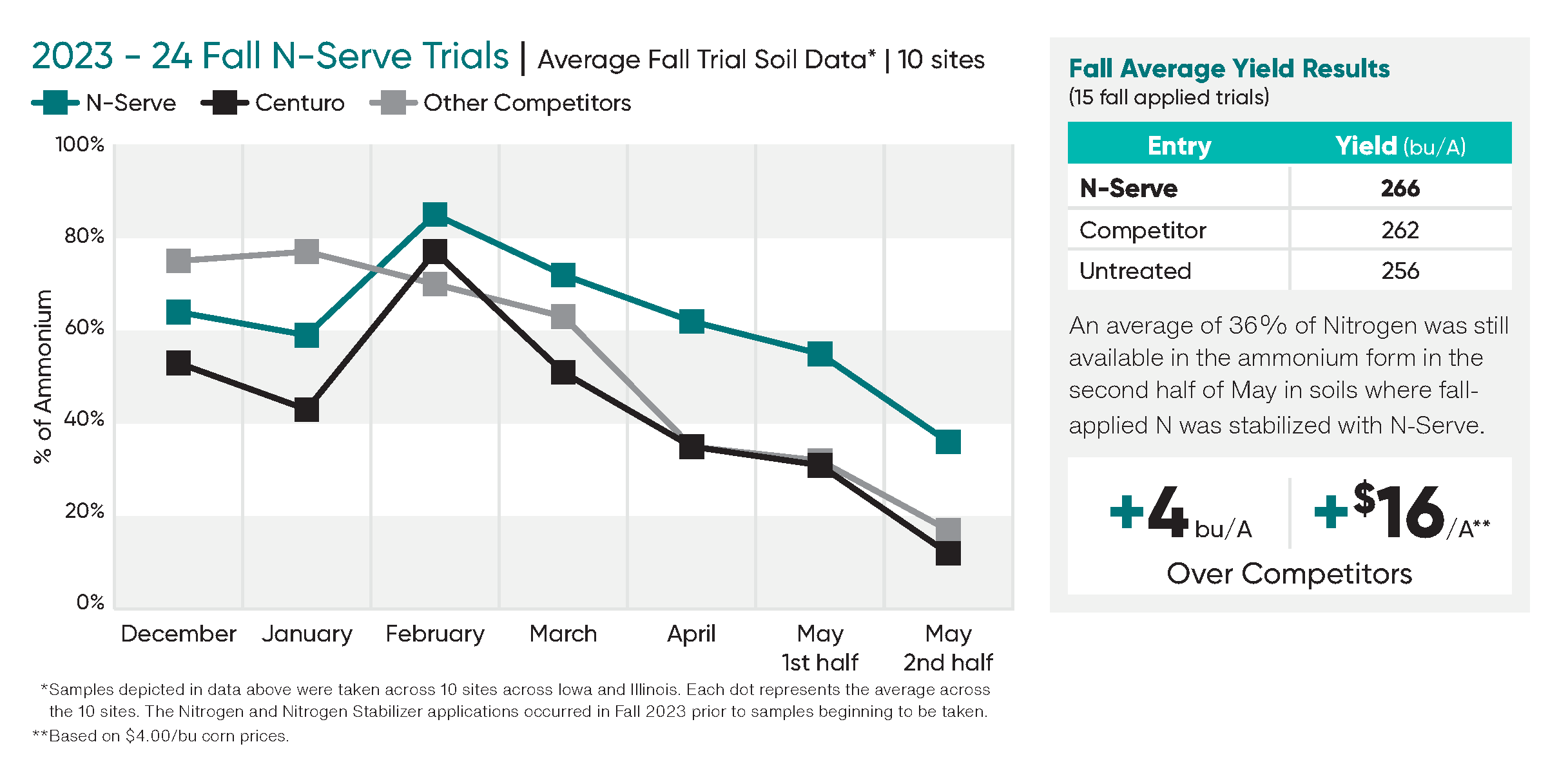Country Selector
Please enter a valid location
Tighten the grip on fall nitrogen — Secure the investment now

Fertilizer is the second-most expensive input farmers will invest in for 2026.
As fall approaches, the price of nitrogen fertilizers has continued to fall slightly, but remains higher than one year ago. Anhydrous ammonia is 13% more costly than in August 2024.1 Other nitrogen sources have even greater price spreads compared with 2024: UAN28 is 25% higher, urea is 28% higher and UAN32 is 32% more expensive. Predicting the price of nitrogen for the 2026 crop is nearly impossible, but it will soon be time to prepare fertility plans and fall application schedules.
The risk requires an insurance policy
Whether farmers apply anhydrous ammonia in the fall to save time or to avoid spring weather risks, nitrogen is a high-stakes investment — essential for yields. Even modest shifts in fertilizer prices can have a big impact on profitability.
In today’s economy, what happens to that nitrogen over winter matters more than ever. Because all nitrogen sources are mobile and prone to loss, the amount that remains in the soil and available in the spring can make or break returns. That’s where the right nitrogen stabilizer comes in — helping hold on to fall-applied anhydrous, so it’s still right where the crop needs it next spring.
And with weather as unpredictable as ever, a stabilizer is a valuable insurance policy. Moisture and temperature drive nitrification rates, but both can swing wildly. Recommending a proven stabilizer helps keep nitrogen in the ammonium form longer, improving uptake — even when spring conditions are not ideal.
Reliable, science-driven results for nearly 5 decades
N-Serve® nitrogen stabilizer is proven to slow down the Nitrosomonas bacteria that convert ammonium to nitrate, keeping nitrogen in the ammonium form longer. Relied upon by growers for nearly 50 years, nitrapyrin is an effective nitrogen stabilizer that works underground, where up to 70% of nitrogen loss can occur through leaching into the ground or denitrification into the atmosphere. The longer nitrogen stays in the ammonium form during the growing season, the less susceptible it is to leaching losses and, therefore, greater opportunity for plant uptake to maximize nitrogen use efficiency and increase yield potential.
Despite excess rainfall, more nitrogen is there when corn needs it
In the spring, all it takes is a period of warm and moist soils for the nitrification process to begin.
On-farm research shows using a stabilizer with fall-applied nitrogen pays off in the spring when soil temperatures and moisture are on the rise.
Throughout six months with higher-than-average rainfall across 10 trial locations, fall-applied nitrogen made with nitrapyrin — N-Serve nitrogen stabilizer — maintained a higher amount of nitrogen in the ammonium form compared with Centuro nitrification inhibitor and other competitors in similar conditions.

Fall-applied results:
- Fields treated with N-Serve nitrogen stabilizer in fall 2023 showed: up to 19% more nitrogen in the ammonium form than untreated samples and up to 24% more than fields treated with Centuro or other competitive nitrification inhibitors.
- Stabilization with this proven technology helps maintain higher total nitrogen in the soil with higher levels of available ammonium as compared to fields treated with Centuro or other competitive nitrification inhibitors.
- An average of 36% of nitrogen was still available in the ammonium form in the second half of May in soils where fall-applied nitrogen was stabilized with N-Serve nitrogen stabilizer.
- In addition, studies show nitrapyrin, on average, can increase corn yield potential by up to 7% when used with fall applications and by up to 5.2% when used with spring applications.2
Samples cited above were taken across 10 sites in Iowa and Illinois. Each dot represents the average across the 10 sites. The nitrogen and nitrogen stabilizer applications occurred in fall 2023.
Download a copy of the full fact sheet here for more information as you begin planning nitrogen programs for 2026.
1Quinn, R. 2025. DTN Retail Fertilizer Trends
2Wolt, J.D. 2004. A meta-evaluation of nitrapyrin agronomic and environmental effectiveness with emphasis on corn production in the Midwest. Numbers cited are average results comparing nitrogen applications applied with Optinyte® technology vs. non-stabilized applications. Results may vary.
Instinct NXTGEN® is not registered for sale or use in all states. Contact your state pesticide regulatory agency to determine if a product is registered for sale or use in your state. Do not fall-apply anhydrous ammonia south of Highway 16 in the state of Illinois. Optinyte® is a registered active ingredient. Always read and follow label directions.
